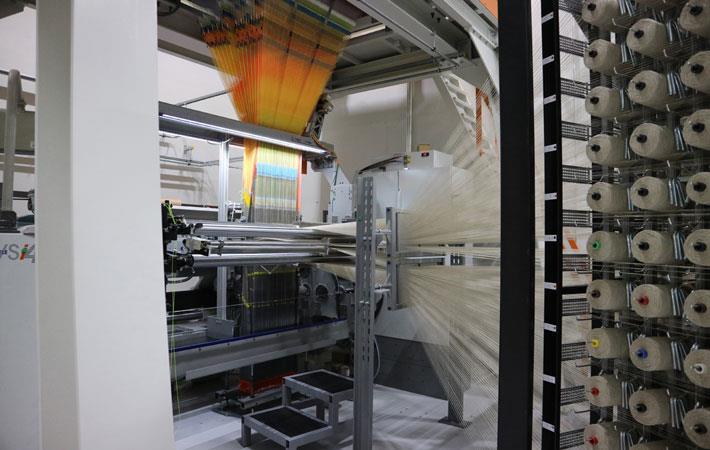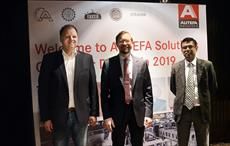Unique Vandewiele jacquard technology is being used for exploring potential of hybrid woven technical textiles for a research institution, HOFZET, the Application Centre for Wood Fibre Research of the Fraunhofer Institute for Wood Research. It has developed new forms of bio-hybrid fibre reinforced composites (bio-HFCs) containing the high bio-based content.
The development work is being carried out on a special double-rapier weaving loom and Vandewiele Jacquard attachment – the only one of its kind in Europe – at the Open Hybrid Lightweight Campus (OHLF) in Wolfsburg, not far from Volkswagen AG’s parent plant. It serves as a competence and research centre for cost-efficient lightweight engineering and innovative materials and manufacturing technologies developed by Volkswagen and its industrial and institutional partners.Unique Vandewiele jacquard technology is being used for exploring potential of hybrid woven technical textiles for a research institution, HOFZET, the Application Centre for Wood Fibre Research of the Fraunhofer Institute for Wood Research. It has developed new forms of bio-hybrid fibre reinforced composites (bio-HFCs) containing the high bio-based content.#
The OHLF weaving technology is enabling the Fraunhofer experts to cost-effectively produce materials with complex, application-specific textile structures and integrated functions, in widths of up to 50cm.
At present, a key HOFZET research focus is on composite reinforcements with a thermoplastic matrix – or ‘organosheets’ – which offer reversible deformation and recycling potential in comparison with thermoset composite materials. The weaving loom enables the integration of thermoplastic matrix fibres into hybrid textiles as perfect thermoplastic prepregs. These prepregs can be shaped to a required form and turned into composites using hot pressing technology. This approach enables a reduction of process steps, cycle times and production waste. Furthermore, the process allows new design freedom, which enlarges the component spectrum of fibre-reinforced composites. The shaping, for example, can be carried out simply and quickly through thermoforming in a die or in the clamping unit of an injection moulding machine.
A robot-controlled fibre-spraying unit further expands possibilities, allowing continuous filaments and yarns to be cut to a specific length and simultaneously wetted in an air stream with a mixture of resin and curing agent and sprayed onto a shaping tool.
In another project, flax-based multi-layer fabrics produced on the special HOFZET weaving system are being employed to reinforce concrete. Textile-reinforced concrete has already proved to be durable, formable in diverse shapes and suitable for lightweight construction and so far has been based on carbon or glass fibres to replace the steel which is conventionally employed.
The flax-based textile is embedded in the given component in layers. Its stiffness is variable, so it can be arranged in a desired shape and could conceivably be cast to create curved contours such as domes and rounded wall elements. (GK)
Fibre2Fashion News Desk – India


